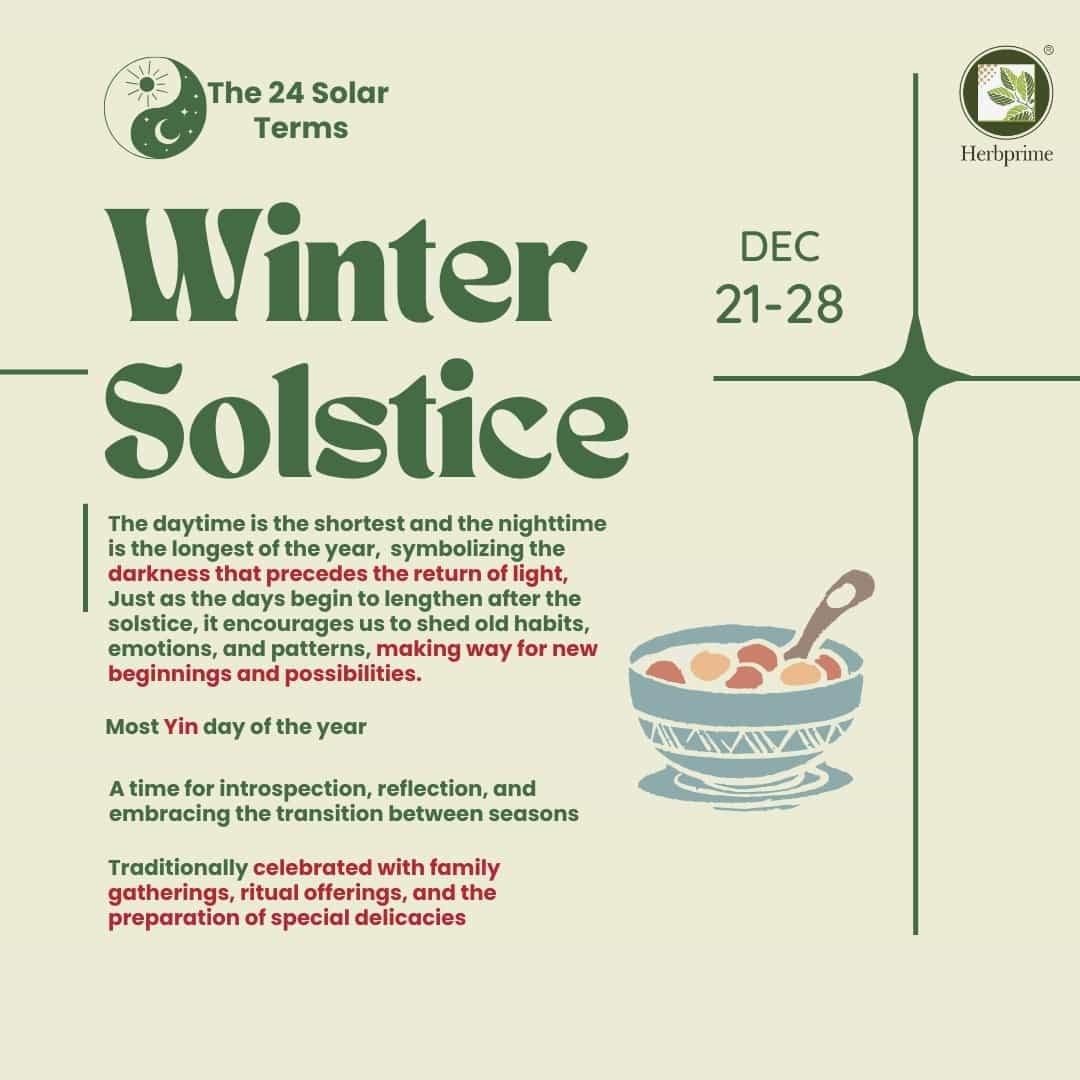
Winter Solstice (Dongzhi) : Celebration of light and hope
Share
A Time for Renewal and Reflection
Dongzhi signifies the shortest day and longest night of the year, symbolizing the darkness that precedes the return of light. It is a time for introspection, reflection, and embracing the transition between seasons. Just as the days begin to lengthen after the solstice, it encourages us to shed old habits, emotions, and patterns, making way for new beginnings and possibilities. As the days grow longer and the darkness of winter recedes, it is a time to nurture the light within us, a beacon of hope that guides us through the ever-changing cycles of life.
Origins and Traditions - Yin and Yang
The roots of Dongzhi can be traced back to the Traditional Chinese Medicine principles of yin and yang, the two opposing yet complementary forces that govern the universe. The winter solstice marks the tipping point from the dominance of yin energy to the gradual return of yang energy, representing the cycle of nature's renewal.
Yang Energy and Traditional Chinese Medicine
In accordance with traditional Chinese medicine principles, Chinese people during the Winter Solstice try to eat foods with high yang energy to compensate for the perceived lack of yang energy during this short day. These foods are believed to help strengthen the body and resist the cold.
Celebrating with Rituals and and Delicious Warmth: 6 Traditional Chinese Foods

Dongzhi is traditionally celebrated with family gatherings, ritual offerings, and the preparation of special delicacies. In southern China, the consumption of tangyuan, glutinous rice balls, signifies family unity and prosperity. In northern China, counting the "nines" of winter is a folk tradition that marks the gradual transition from winter's grip to the promise of spring.
1. Glutinous Rice Balls (Tangyuan): Family Reunion in Every Bite
Southern China welcomes the winter's embrace with glutinous rice balls, known as Tangyuan. Their round shape symbolizes family reunion and completeness, resonating with the spirit of gathering during Dongzhi. Sweet or savory, these delightful spheres come filled with treasures like black sesame paste, peanut paste, or even savory meat fillings. Each bite warms the body and fuels conversations, strengthening the bonds of family and community.
2. Dumplings
In Northern China, dumplings reign supreme on the Dongzhi table. These delectable pockets symbolize not only protection from the cold but also family unity, as families gather to fold and savor them together.
3. Wontons: Comforting Broth and Savory Delights
Especially popular in Beijing and Suzhou, wontons offer a delightful winter treat. Similar to dumplings, wontons are enveloped in savory fillings and savored alongside a warm broth that brings comforting warmth from the inside out on a chilly winter day.
4. Mutton Soup: Warming Powerhouse Against the Chill
In many northern regions, the robust flavors of mutton soup take center stage. This hearty dish comes at the perfect time, as the winter's grip tightens. Mutton, brimming with calories and iron, is believed in traditional Chinese medicine to boost blood production and generate warmth. Whether enjoyed on its own or complemented by vegetables and noodles, mutton soup is a culinary hug that chases away the winter blues.
5. Daikon: A Humble Root with Mighty Properties
A Chinese proverb aptly states, "Daikon in Winter Solstice, ginger in Summer Solstice." This humble root vegetable finds its rightful place on the Dongzhi table. Daikon, with its crisp texture and subtle spiciness, is believed to enhance resistance to the cold. Traditionally, it's paired with spareribs in a steaming soup, offering a light yet heartwarming counterpoint to richer dishes.
A Celebration of Light and Hope
Dongzhi is a celebration of light and hope, reminding us that even in the darkest of times, the return of light is inevitable. It is a time to cultivate gratitude, resilience, and the inner strength to navigate through challenges.

